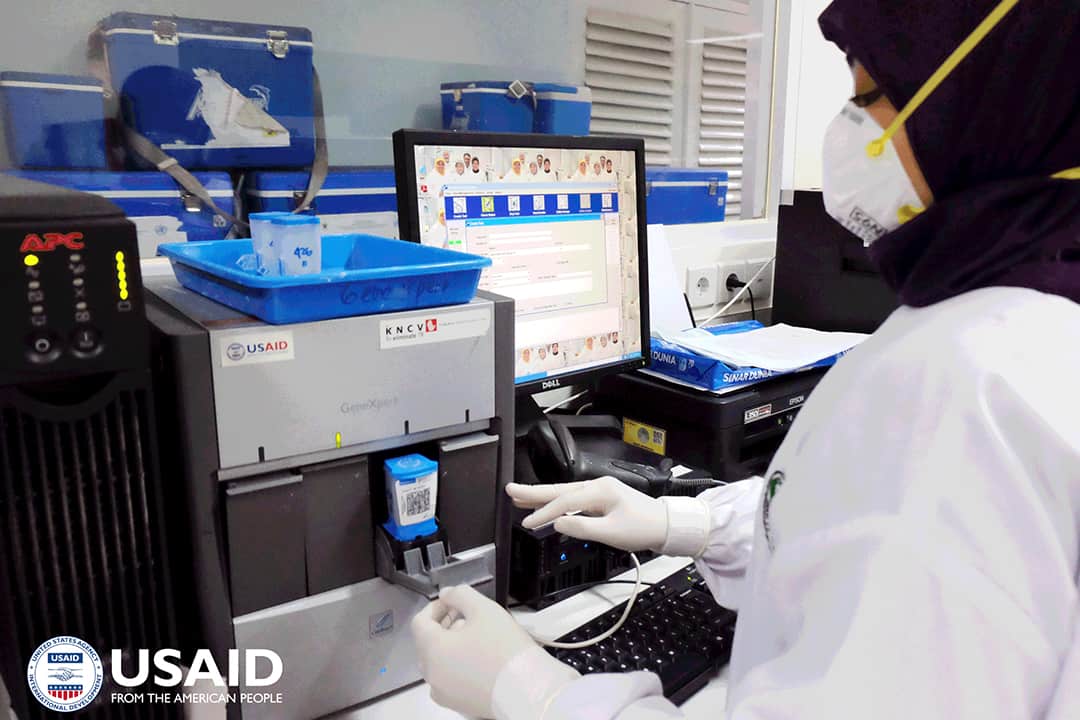Tuberculosis (TB) in the twenty-first century feels a bit old-world, doesn’t it? Though tuberculosis has always been one of humans’ biggest dangers, it feels old-fashioned, like smallpox or the bubonic plague.
But TB is far from a thing of the past. Even though humans cracked the code for the antibacterial drugs that fight it decades ago, TB remains the deadliest infectious disease in the world. It was the second deadliest disease in 2022, only falling behind COVID-19.
A patient’s recovery from TB is contingent on two things: diagnosis and treatment. Treating TB can be straightforward in many cases, but one major problem facing impoverished communities is actually identifying the disease in a patient before it’s too late to treat.
Traditional methods for diagnosing TB are highly labour-intensive, often involving a lab tech sitting at a microscope and identifying signs of the bacteria from a biological sample. But in the twenty-first century, technology offers a newer and easier way for low- and middle-income countries to rapidly diagnose TB.
Enter the GeneXpert machine. It’s a brilliant invention by Cepheid, a biotech firm owned by the Danaher Corporation, a large American holdings corporation. GeneXpert takes a sample of body fluid inserted into a plastic cartridge to diagnose TB. The fluid undergoes a polymerase chain reaction inside the machine to identify any DNA from Mycobacterium tuberculosis, the bacteria that causes TB. It only takes a matter of hours for the machine to make its analysis.
Not only does GeneXpert turn a highly time-consuming job into a quick and easy process, but it also has the additional ability to determine whether the patient’s TB is multi-drug resistant (MDR) — a critical piece of knowledge in determining a treatment plan. MDR-TB is defined as a TB strain not susceptible to some antibiotics. Using the wrong drugs to treat an MDR-TB patient can lead to serious complications or death.
However, as is often the case with global health issues, the problem with using GeneXpert machines is their cost. Machine users have to buy a single-use cartridge for each patient. It’s easy for charitable organizations like the United States Agency for International Development to make a one-time donation of GeneXpert machines to impoverished communities, but this burdens the same communities with the ongoing cost of the cartridges the machines use — a situation comparable to having to purchase expensive ink for a relatively cheap printer. When each diagnosis comes at a 10 USD cost for a remote rural clinic in the developing world, it’s hard to argue that Danaher and Cepheid are fighting TB so much that they are profiting from the world’s poorest healthcare systems.
Tuberculosis activists have long been campaigning Danaher to reduce the cost of GeneXpert cartridges. Independent analyses have concluded that their cartridges cost less than 10 USD to manufacture. For years, organizations like the French humanitarian medical group Doctors Without Borders, have been fighting for a 50 per cent cost reduction of GeneXpert cartridges — the “Time for $5” campaign, as it came to be known. However, the Danaher Corporation is an obscure and non-public-facing company. It’s difficult to campaign against something that no one has heard of. Activists needed a spokesperson.
This is where John Green — an American author, YouTuber, and philanthropist — comes into the picture. Most people know him from his 2012 novel The Fault in Our Stars or his YouTube projects like Vlogbrothers and Crash Course. What people know less about him is his recent involvement with TB activism. Earlier this year, Green led a campaign against Johnson & Johnson to release their patent on Bedaquiline, a drug for treating MDR-TB. More recently, he and his internet community led an initiative to flood Danaher’s social media and contact lines with demands to lower the price of GeneXpert cartridges.
The ongoing “Time for $5” campaign, combined with Green’s extensive following, proved too loud for Danaher to ignore. On September 19, Danaher announced a price cut to 7.97 USD — a 20 per cent reduction in consumer cost — after just a week of Green’s public involvement in the campaign. For poorly funded healthcare systems, this reduction can make a difference. Though this is still far from five dollars, it is progress in the right direction.
Inequitable access to health care is an ongoing and complex issue. The TB crisis is not going to go away overnight. But the fact that this four-year campaign was suddenly accelerated in a matter of days by an influencer is a clear sign that we can make progress by employing our attention — an incredibly precious and powerful resource.



No comments to display.